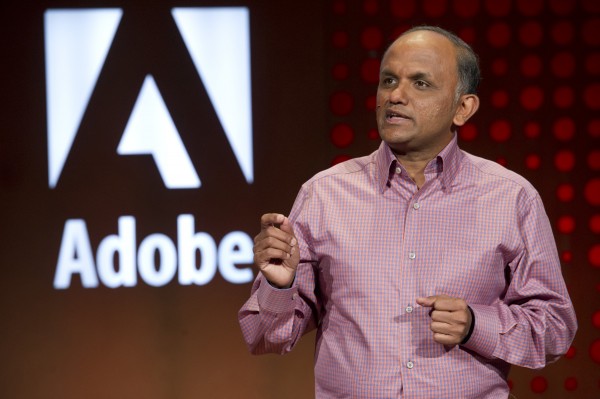“Ultimately, when you do the right thing for the customer, everything falls into place.”
Wise words for any enterprise, but particularly for those now considering digital transformation. And the speaker should know.
Shantanu Narayen, president and chief executive officer of Adobe Systems, Inc., one of Perficient’s Strategic Partners, led his company through one of the most notable transformations ever witnessed in the corporate world. He is credited with lifting a company famous for digital publishing off of the desktop and into the cloud, then selling online subscriptions to Adobe’s market-dominant products such as InDesign, Illustrator, and Photoshop so customers could reach into that cloud.
Criticism rained hard on Narayen for doing this, in part because cloud computing was still elbowing its way into contemporary corporate language and people were uncertain whether the technology was secure enough to serve the marketplace. Today, however, Adobe is considered a global leader in digital marketing and a standard-bearer in the march toward digital transformation.
Recently, Narayen addressed transformation in comments for the Australian Financial Review while visiting Sydney for an Adobe symposium. In the sprawling land Down Under, the federal government raised transformation’s profile by creating a Digital Transformation Office that will oversee co-ordination and development of that country’s digitally delivered government services.
On this side of the Pacific, a development of such magnitude suggests Australia’s cloud is well above America’s, perhaps hovering somewhere near the stratosphere. In fact, the two markets remain at the same altitude, and attitude. For example, a recent survey found that 89 percent of large and medium-size retailers in Australia and 37 percent of small retailers believe they offer good customer service but had no means of measuring that perception beyond charting unsolicited customer feedback.
Narayen says that belief inflicts the boards of too many retailers worldwide and trickles down throughout their organizations to slow transformation’s progress.
“A great board is one that spends disproportionate amounts of time with management, taking active steps to understand the opportunities and challenges facing the business,” he told Financial Review. “With the world increasingly moving to digital and businesses implementing digital strategies, boards also need to boost their digital capabilities to be better strategic advisers to the business.”
In the United States, that will be tough when IT budgets are expected to rise no more than 1 percent higher this year over last, putting tech staffs in a difficult position to shepherd transformation at the legacy level.
At Adobe, “our digital transformation has been the foundation for growing our business, opening new doors to customer engagement and delivery, and also disrupting and leading many of the categories we operate in,” Narayen said. “Our board has been involved in our transformation strategy from day one and continues to be supportive.”
Probably every corporate board in the world is pondering digital transformation and desires Adobe-level results, Narayen said. The first step in that direction requires accepting digital’s dominance in the marketplace.
“Every multi-year strategic business plan must include digital thinking,” he said. “It’s not an option to ignore it.”
The next step requires boards to make a convincing argument for transformation and its overarching purpose.
“As an organization, we have to be clear why the digital transformation is going to be better for customers,” Narayen added.

